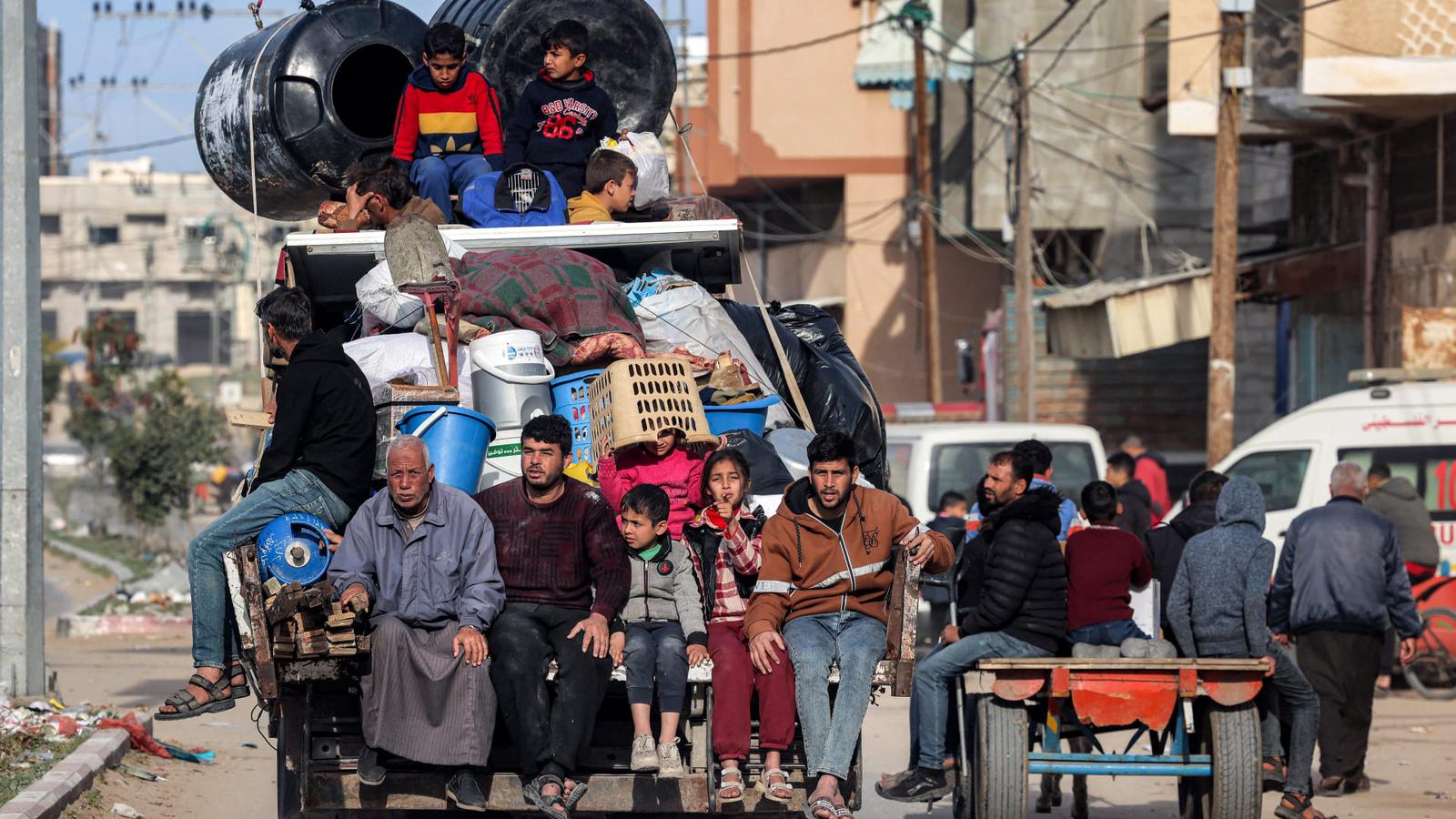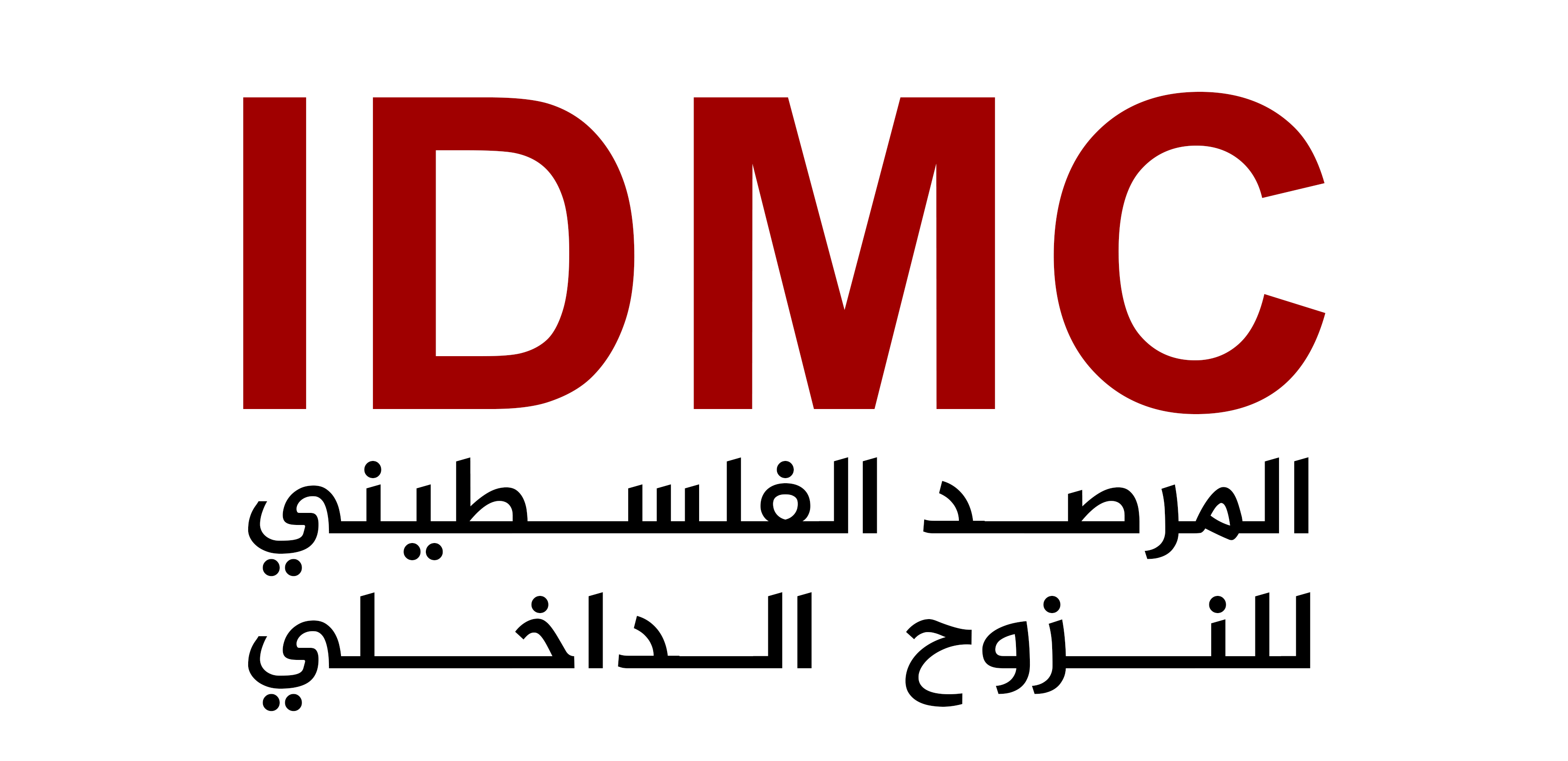
Analysis of the State of Internal Displacement and Violations Against Displaced Persons in the Gaza Strip (March 30 – June 30, 2025)
A Field and Human Rights-Based Perspective
1. Introduction
Since October 2023, the Gaza Strip has continued to face a multi-layered humanitarian catastrophe, which grows more complex with each wave of military escalation. This has taken place amid a rapid deterioration in living conditions, the collapse of civil protection systems, and the fragmentation of the social fabric. While the early months of 2025 witnessed a partial return of displaced people following the declared ceasefire on January 19, new waves of forced displacement resurged from late March, driven by the expanding scale of military operations, intensified evacuation orders, and repeated attacks on areas crowded with displaced persons.
In this context, this paper seeks to provide an observational and human rights-based analysis of the internal displacement situation in the Gaza Strip during the period from March 30 to June 30, 2025. It focuses on patterns of repeated displacement, shifts in shelter locations, and grave violations against displaced individuals amid the near-total collapse of infrastructure and basic services. This analysis is based on verified data from the "Palestinian Observatory for Internal Displacement," as well as local and international reports, with the aim of understanding the evolving humanitarian landscape and assessing compliance with relevant international humanitarian law.
This study is part of ongoing efforts to uncover facts, document violations, and offer knowledge-based support to humanitarian and rights-based initiatives aimed at protecting civilians, delivering justice to victims, and holding perpetrators of grave violations accountable particularly in light of the ongoing failure of the international community to ensure accountability.
2. Methodology
This paper relies on a multi-method observational and analytical approach that combines direct field documentation with both quantitative and qualitative data analysis. Sources include:
- Periodic data issued by the Palestinian Observatory for Internal Displacement at Ajyal Association for Creativity and Development, including monthly displacement monitoring reports.
- Ongoing reviews of reports from local and international organizations, including UNRWA, OCHA, the International Committee of the Red Cross, and daily field coordination reports.
- Analysis of official evacuation warnings issued by the Israeli military, correlated with actual population movements and the timing of attacks.
- Comparative analysis of geographical data and reverse displacement patterns, especially in areas that experienced repeated evacuations or emerged as new reception zones.
This study gives particular importance to analyzing the link between shifts in displacement patterns and the violations committed against displaced persons, whether during movement or within shelter centers. This enables a deeper reading that goes beyond statistics to understand the dynamics of targeting, especially in the absence of safe corridors and weak international response.
3. Analytical Findings
First: April – Surge in Displacement in the South and Systematic Targeting of Shelters
April 2025 marked one of the deadliest periods in the course of internal displacement in Gaza. Military warnings from the Israeli army surged and were accompanied by direct attacks on shelters and displaced persons' tents, particularly in southern areas of the Gaza Strip. The month witnessed repeated waves of displacement that forced tens of thousands to flee toward Al-Mawasi and other exposed coastal areas, amid the absence of safe passages and the continued closure of border crossings for the 60th consecutive day.
During this month, the Israeli army issued 15 evacuation orders covering wide areas in the north (Beit Hanoun, Sheikh Zayed, Tel Al-Zaatar, Jabalia, Shuja’iyya), as well as Rafah, Khan Younis, and Nuseirat. This prompted large-scale displacement westward. There were frequent shifts in the supposed destinations of displacement, with no provision of essential services or safety guarantees.
April alone saw the documentation of over 35 direct attacks on shelters and tents of the displaced, resulting in hundreds of casualties, including women and children. Key incidents included:
- The bombing of Dar Al-Arqam School in Al-Tuffah, east of Gaza City, on April 3, which killed 35 people and injured around 100 others.
- The bombing of Fahd Al-Sabah School in the same neighborhood on the same day, which resulted in four deaths and about six injuries.
- Targeting of soup kitchens distributing food in western Khan Younis on April 5 and 7, which led to casualties among people waiting in line for assistance.
- Bombing of a tent inside Nasser Hospital in Khan Younis and tents near medical centers — highlighting a deliberate violation of protected sites under international law.
Other shelters that were hit included: Muawiya Bin Abi Sufyan School, Halab School, Yarmouk Stadium, Al-Shuja’iyya Club, Yafa School, Farabi School, Al-Shafi’i Center, and Al-Ayyubiyah School — all resulting in fatalities, injuries, and the destruction of vast portions of temporary shelter infrastructure.
Repeated attacks in Al-Mawasi undermined any remaining sense of relative safety, especially after bombings near the British field hospital southwest of Khan Younis, the Hamad Towers in western Khan Younis, and “Istabl Street” in Al-Mawasi — where 15 people, mostly children, were killed in a single airstrike.
April 2025 also saw repeated attacks on food aid and relief facilities — including distribution centers and community kitchens — as part of a systematic policy of starvation and collective pressure.
This was compounded by the near-total collapse of supply chains. On April 26, UNRWA and the World Food Programme announced the complete depletion of food stocks, coinciding with the continued blockade, fuel and flour shortages, and bakery closures — all of which deepened the humanitarian chaos, particularly in newly formed displacement sites.
Signs of total collapse were also evident in shelter areas, where medical, health, and clean water services had all but disappeared. Diseases — especially skin conditions — re-emerged among children due to high population density and insufficient humanitarian support.
Second: May – Escalating Displacement to the North and Renewed Indiscriminate Attacks on Shelters
May 2025 marked one of the most intense phases of forced displacement within Gaza. The Palestinian Observatory for Internal Displacement recorded mass displacement across most areas of the northern, central, and southern Gaza Strip due to intensified Israeli military operations, widespread evacuation orders, and repeated attacks on shelters and displacement routes.
a. Waves of Displacement and Shifts in Population Maps
In the second week of May alone, over 172,000 people were displaced. The cumulative total since mid-March exceeded 600,000 displaced individuals. The largest waves were recorded in Jabalia Camp, Beit Lahia, Sheikh Zayed, Beit Lahia Project, and Tel Al-Zaatar in the north, extending later to eastern Deir al-Balah and Khan Younis in the south. Ongoing bombardment of shelters and tents forced thousands of families to move westward to areas deemed slightly safer, such as Sheikh Radwan, Al-Maqousi, Gaza Port, and Al-Mawasi in southern Gaza. Many were left in the open or in makeshift tents lacking the most basic living necessities.
b. Evacuation Orders and Systematic Targeting
Throughout the month, the Israeli army issued ten evacuation warnings. Some targeted densely populated neighborhoods and specific shelters, including Jabalia and Sheikh Zayed in the north, Southern Rimal and Al-Nasr neighborhoods in Gaza City, as well as Al-Qarara and Abasan Al-Kabira in southern Gaza. These warnings were issued without providing safe destinations, causing chaos and leaving thousands of civilians exposed to attacks during displacement.
c. Targeting of Civilians and Shelters
In May, more than 35 sites used as shelters for displaced persons were directly targeted. Notable incidents included:
- The repeated bombing of Ohmaysa School in Al-Bureij Camp in central Gaza on May 6, which killed over 43 people, most of them children.
- The repeated bombardment of Al-Karama School in Al-Tuffah, east of Gaza City, over three consecutive days, resulting in at least 20 deaths.
- Atrocities were recorded in shelters in Nuseirat (central Gaza), Al-Mawasi (south), and Jabalia (north), where displaced persons were killed while digging water wells or gathering for aid distribution.
Food kitchens and distribution centers were also targeted, including attacks on Al-Nafaq Street, Abdel Aal in eastern Gaza, and Al-Hasayna in northern Nuseirat — part of what appears to be a deliberate strategy to dismantle survival mechanisms and intensify famine and collective pressure.
d. Humanitarian Collapse and Famine Indicators
On May 7, 2025, the Palestinian government officially declared Gaza a famine zone after food stocks ran out and crossings remained closed for over 70 consecutive days. Hospitals in the north were rendered inoperative, children died of starvation, and both healthcare facilities and shelters collapsed. Dangerous phenomena emerged, such as road blockades to hijack aid and violent clashes in bread and fuel lines.
e. Failure of Humanitarian Protection
Despite clear signs that civilians were being deliberately targeted, no effective protection mechanisms were recorded from the international community or relief organizations. On the contrary, aid convoys, ambulance teams, and hospital entrances came under attack — including the Kuwaiti field hospital and the besieged Indonesian hospital — further destabilizing the humanitarian situation and stripping displaced persons of any sense of safety or ability to cope.
Third: June – Escalating Displacement and Worsening Humanitarian Crisis Amid Systematic Targeting
June 2025 witnessed a significant escalation in violations against displaced persons in the Gaza Strip, marked by the highest recorded rates of mass killings near shelters and aid distribution points. This was coupled with an expanded wave of forced evacuation orders and growing indicators of the near-total collapse of the relief and humanitarian assistance system.
a. Surge in Forced Displacement and Movement Restrictions
Although the total number of newly displaced persons declined compared to the previous month, June saw repeated and concentrated displacement waves—particularly from the northern and central areas of Gaza toward Al-Mawasi in southern Khan Younis and Deir al-Balah in central Gaza. During the first two weeks of June, more than 70,000 additional individuals were displaced, including families forced to flee three or more times in recent weeks due to the absence of any safe havens.
This coincided with the issuance of over 12 official evacuation warnings by Israeli forces. These warnings affected large neighborhoods in Jabalia (northern Gaza), Al-Tuffah and Al-Zaytoun (east Gaza City), and eastern Khan Younis (southern Gaza), sparking panic and chaos and worsening overcrowding in already congested displacement areas.
b. Systematic Targeting of Displaced Persons and Shelters
What most clearly characterized June was the frequent and deliberate targeting of shelters, tents, and aid distribution lines, in a repetitive pattern indicative of a systematic policy aimed at destroying all means of civilian survival.
More than 70 direct attacks on shelters and tents were documented during the month. Among the most prominent:
- Bombing of Osama bin Zaid School in the Al-Saftawi area of northern Gaza City (June 27), resulting in the killing of eight civilians, including an infant.
- Targeting of Fahd Al-Sabah School shelter in Al-Tuffah (June 29), Al-Hurriya School in Al-Zaytoun, Zainab School in Jabalia, and others—resulting in casualties and injuries.
- Repeated attacks on aid distribution points in Al-Shakoush (north Rafah, southern Gaza) and Wadi Gaza (central Gaza), which killed over 200 civilians during the month and wounded hundreds more—mostly women and children.
There was also a noticeable pattern of focused attacks on community kitchens, bakeries, and relief vehicles. Notable examples include:
- Bombing of a field bakery in Al-Mawasi, Khan Younis (June 8).
- Attacks on and looting of aid trucks on Salah Al-Din Street in Khan Younis and near the Netzarim corridor in central Gaza, prompting some international organizations to temporarily suspend their operations.
c. Collapse of the Relief System and Spread of Famine
By mid-June 2025, wide areas of Gaza were declared “humanitarian disaster zones,” as the following developments unfolded:
- Near-total depletion of food and medical supplies in northern Gaza.
- Suspension of U.S.-affiliated distribution centers on several days due to shelling or chaos (June 4, 6, 20, and 26).
- Increasing reports of people sleeping in the open, with over 100 recorded cases of aid theft.
- Resurgence of infectious diseases such as acute diarrhea among children in shelters amid the absence of health oversight.
- Continued failure of protection mechanisms and pervasive impunity.
Despite the repeated documentation of grave violations, no effective measures were taken to prevent them. On the contrary, attacks extended to:
- Humanitarian aid teams, including a relief crew in Deir al-Balah (June 30).
- Schools, mosques, and field hospitals.
- Areas previously designated as safe shelters.
According to OCHA data published on June 26, 2025, more than 82% of Gaza’s territory was either under evacuation orders or classified as closed military zones—indicating a near-total shutdown of all movement or survival corridors.
4. Conclusion and Recommendations
The analysis of internal displacement in Gaza during the second quarter of 2025 reveals a catastrophic humanitarian reality that goes far beyond traditional crises. Displacement no longer reflects merely the loss of shelter or safety—it has become a continuous state of repeated forced uprooting, amid the collapse of protection systems and the systematic targeting of humanitarian infrastructure and shelter facilities.
The data indicates that Israeli policies now go beyond forced displacement alone, adopting a compound approach that includes siege, starvation, and mass killings of displaced populations. These actions constitute grave and systematic violations of international humanitarian law, especially the Fourth Geneva Convention, and demand urgent international intervention.
Based on the above, this paper recommends the following:
- Call on the international community, especially the High Contracting Parties to the Geneva Conventions, to fulfill their legal and moral responsibilities by exerting immediate pressure to halt Israeli attacks on civilians, shelter facilities, and aid distribution centers.
- Open independent international investigations into the violations committed against displaced persons in Gaza, particularly the targeting of shelters and food queues, as these may amount to war crimes and crimes against humanity.
- Urge the United Nations to activate effective protection mechanisms for civilians in displacement zones, including the monitoring of aid distribution areas and ensuring the establishment of safe and sustainable humanitarian corridors.
- Demand the unconditional entry of humanitarian aid, rejecting any form of political or security-based blackmail associated with the delivery of food and medicine, as access to these is a non-negotiable human right.
- Encourage international and local organizations to carry out continuous and comprehensive documentation of violations, with the aim of preparing legal case files for submission to international courts and relevant UN bodies.
- Hold the Israeli occupation fully accountable for causing repeated displacement and the accompanying violations. As an occupying power, Israel bears the legal obligation to protect civilians and meet their basic needs under international law.
- Call on the Palestinian Authority to intensify its efforts in safeguarding the rights of internally displaced persons, coordinate humanitarian and legal responses with UN agencies, and work to establish genuine mechanisms for compensation and reparations for victims.
- Amplify the voices of displaced persons in regional and international forums and ensure their participation in shaping response strategies and post-crisis planning—based on their inherent right to dignity and voluntary, safe return.

Mahmoud Wafiq El-Sharkawy
A Palestinian lawyer and writer. His family was displaced to the Gaza Strip in 1948 from the city of Jaffa. He is a legal researcher with the Palestinian Internal Displacement Observatory team.
- Crisis Response
- Aerial Strikes
- Field Reports
- Casualties and Injuries
- IDPs (Internally Displaced Persons)
- Displacement Patterns
- Civilians Under Attack
- Internal Displacement
- Conflict Analysis
- Forced Displacement
- Casualty Reports
- Food Insecurity
- Blockade on Gaza
- Displacement
- Crisis Management
- Civilian Protection
- Emergency Aid
- Medical Supply Shortages
- Food Insecurity in Gaza
- Social Disintegration
- Ethnic Cleansing
- Banned Weapons
- Civilian Suffering
- Education Rights
- Child Exploitation
- Children’s Rights
- people with disabilities
- disability in Gaza
 English
English

